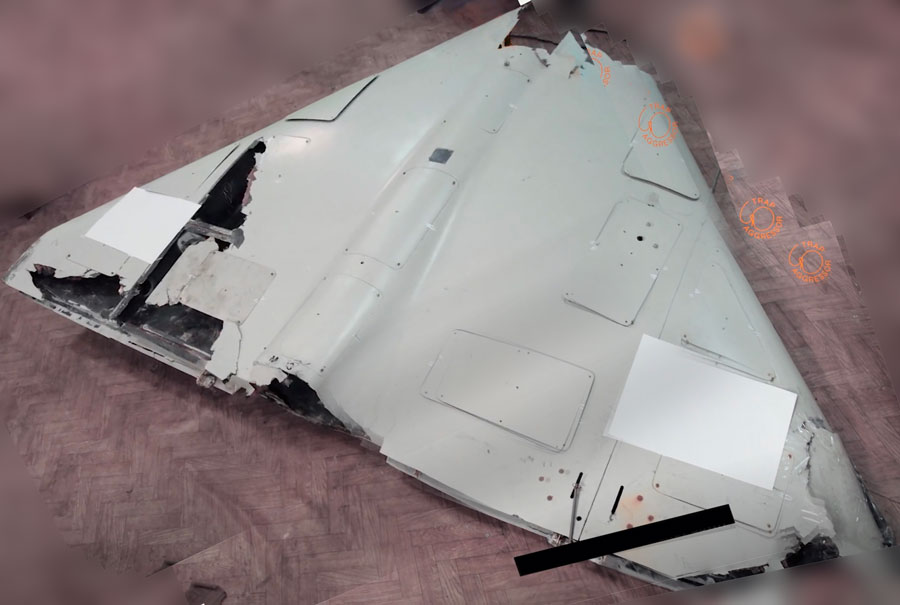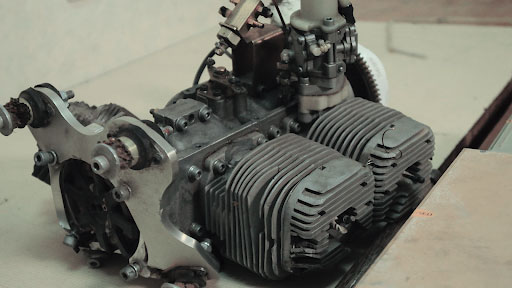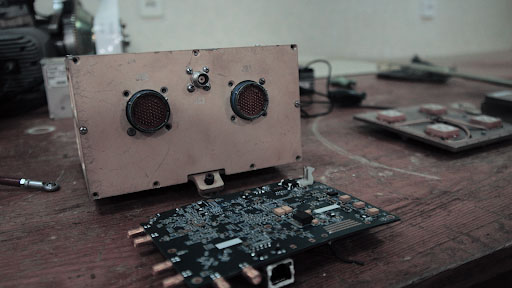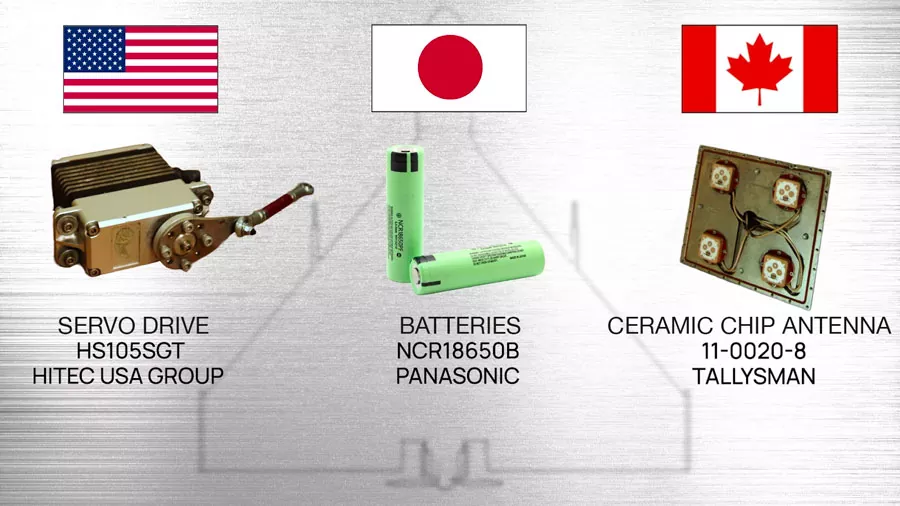The investigators examined the parts of the Iranian Shahed-136 in partnership with the Independent Anti-Corruption Commission (NAKO).

Since early September, Russians have been attacking Ukrainian civilians with the Shahed-136 Iranian drones which were colloquially dubbed “mopeds” for the peculiar sound they produce during the flight.
The Shahed-136s were developed by HESA, an Iran-based aircraft manufacturing industrial company. The UAV weighs approximately 200 kilograms, 40 of which are its warhead. The explosive charge and optics for accurate attack are placed in the front of the UAV. These kamikaze drones are launched from a truck in series and can reach a velocity of more than 185 kilometers per hour midair. The Russian military renamed the aerial vehicle Geran-2 to disguise the Iranian origin of this weapon.
The Ukrainian intelligence disassembled several Shahed-136s and found that almost every part of the drone is of American or European origin. The only domestically-produced component is its engine.

The manufacturer of the Shahed-136’s engine is the Iranian Oje Parvaz Mado Nafar Company (MADO). It specializes in drone component production and imports-exports of commercial products. According to the US Treasury Department, MADO procured UAV engines for organizations affiliated with the Islamic Revolutionary Guard Corps. On 29 October 2021, the US Treasury Department imposed sanctions on the company and its managers for purchasing engines and parts for Iran’s military industry, freezing its assets under US jurisdiction. The same sanctions apply to foreign parties who facilitate the organization’s transactions or otherwise help it.

All parts inside the Shaheds but their engines are foreign-made. The Ukrainian intelligence managed to identify more than 30 European and American companies that had produced the components used in the Shahed. Most of the parts are US-made. Its servo drive comes from the American Hitec USA Group, its batteries are from the Japanese Panasonic, and its ceramic chip antenna was produced by the Canadian Tallysman. The Shahed’s control board is assembled from Japanese and American parts. The power supply board is made of German and Chinese components. The control unit was produced by the Russian plant Zapadpribor.

The Shahed’s boards, digital signal processors, transceivers, drivers, and receivers were manufactured by the infamous Texas Instruments company, which continued to work with Russia after Russia had annexed Crimea and unleashed the war in the Donbas in 2014. After the last month’s TrapAgressor’s report on the Russian Iskander cruise missiles that shed light on their production, Texas Instruments finally answered regarding whether they were going to continue to trade with the Russian Federation: the company said it doesn’t supply anything directly to the Russian market.

Texas Instruments even promised to remove all references to Russia from its website which included the address of its Moscow branch and the phone number, yet those references remain on the site to this day (the contact Russian phone has been removed as of Nov 17 evening, the time of the publication of this English-language version of the material, the original video was published on YouTube on Nov 16, – Ed.). Instead, they added the following note: ” If you need to contact us in a country not listed above, please reach out to our customer support center” (the note remains, – Ed.).

Also, Ukraine’s Main Directorate of Intelligence identified a Ukrainian part in the Shahed-136s – an electrical relay manufactured by the Ukrainian state-owned Kharkiv-based enterprise Radiorelé:
Ukrainian relays supplied to Russia up to 2016 found in Iranian kamikaze drones – investigation
The Radiorele enterprise is a subsidiary of the State Property Fund of Ukraine. In 2020, the enterprise was put up for privatization due to inefficient management but no investor has been found to this day. The company’s chief Anatolii Donets, who’s been running the Radiorele since 2007, continues to manage the loss-making asset. In 2020, in an interview with local journalists, Donets complained that back in 2016, the company lost its largest sales market, which “was mainly Russia for us.” In this way, he actually confirmed that the Ukrainian state company was trading with the aggressor state of Russia up to 2016. Probably, it was the Ukrainian relays supplied to Russia that ended up in Iranian weapons, which have been now destroying Ukrainian cities and killing civilians.
Experts from the Independent Anti-Corruption Commission have sent over 35 letters to all the companies whose parts were discovered in Iranian UAVs. And to date, only three of those sent their responses.
“Their answers continue a classic tradition of Ukrainian bureaucratic responses – ‘yes, we know about the story, we are actively following it, but we cannot give you any specific response’,” said Viktoriia Vyshnivska, NAKO’s Advocacy and Communications Manager.
Mass attacks on the civilian population often occurring on the so-called “black Mondays” and the use of Iranian drones against Ukraine’s critical infrastructure rather indicate Putin’s inability to win any, so to say, victories on the front. Ukrainian soldiers give a worthy rebuff to the enemy. Our task, together with the world community, is to help them in their efforts.
Watch the TragAgressor’s investigation on YouTube.
Read also:
- Ukraine intelligence confirms that Russia, Iran prepare agreement on supplying Iranian missiles to Russia
- The Iranian Shahed-136 drone has virtually all foreign elements, some manufactured after February 24 – Intelligence
- More than 30 Western components found in Iranian-made Shahed-136 UAVs – investigators
- Ukraine shoots down at least ten Iranian drones every day, Zelenskyy says
- 70% of Russian war machine CEOs are still not under sanctions
- Ukrainian air defenses shoot down 12 of 13 Iranian-made drones in Russia’s night attack
- Mobilized Russians will wear Iranian body armor and helmets – Ukraine intel
- Ukrainian troops shot down Iranian-made Shahed-136 loitering munition for the first time ever – media
- How to finally stop “Putin’s favorite factory” from producing cheap tanks
- CEOs of Russia’s largest military concern are still sanction-free


